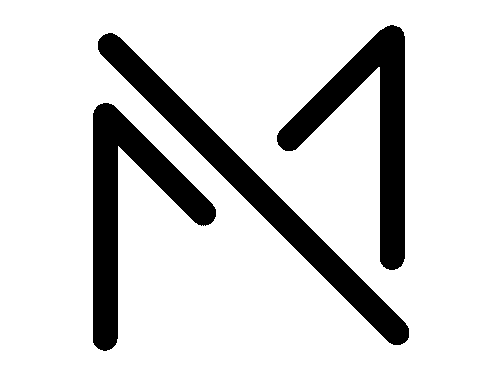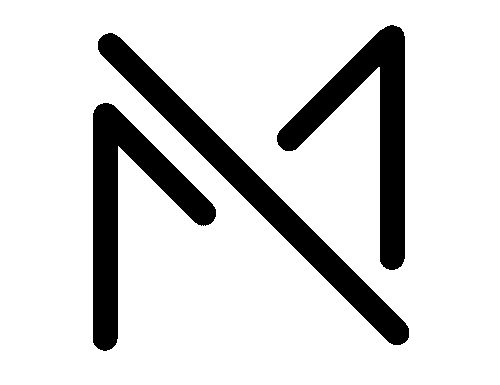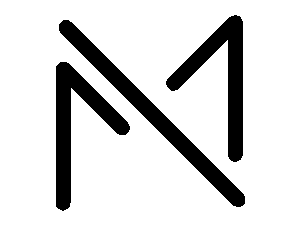A great content director sets strategy, turns insights into a plan, orchestrates people and production, protects the brand’s voice, and constantly optimizes for business outcomes. Marketers Quest replicates that job as a software system, pulling live market signals, translating them into channel-specific plans, generating creative options on demand, enforcing brand standards, and learning from performance – all within minutes and repeatability of automation. If a copywriter gives you words, a content director gives you a machine that ships the right words, at the right time, for the right audience. Marketers Quest is that machine.
1) What a content director actually does (and why it’s hard)
A content director’s remit spans five layers:
- Insight & Strategy – knowing what the audience cares about, what competitors are winning with, and how content should ladder into business goals.
- Planning & Resourcing – turning strategy into a calendar, briefs, formats, cadences, and budgets.
- Creative Direction & Craft – shaping hooks, angles, visuals, and variations for each channel.
- Governance & Enablement – codifying voice, compliance, and templates so others can execute consistently.
- Performance & Optimization – measuring what works, reporting it, and iterating fast.
The challenge is scale: doing this for multiple platforms, formats, regions, and stakeholders without burning time on manual research or coordination.
2) How Marketers Quest stands in for that role
Marketers Quest is built as a closed loop: insight → plan → create → publish → learn. Each tool fills a content director function:
- Trend Analysis (by region/platform): your real-time radar. It surfaces rising topics, keywords, and content formats before they peak, so strategy isn’t guesswork.
- Competitor Benchmarking: an always-on competitive review. It analyzes last posts, engagement, cadence, top hashtags, and ad signals, what a human would synthesize in a deck, delivered instantly.
- Hashtag Research (region + industry): a tactical map that classifies tags as “about to trend,” “trending,” and “evergreen,” with thresholds for daily/3-day/weekly momentum.
- AI Social Media Calendar: a strategy-aware planner. You set goals (leads, reach, followers, engagement), platforms, industry, and frequency; it outputs a channel-specific calendar with suggested formats, angles, and posting windows.
- Visual Content Creator + AI Image Generation: a creative studio inside your workflow, so you can build or generate assets without context switching.
- Caption/Copy Generator (with five variants) and Post/Reel/Video Direction: a writer’s room and creative direction in one click, multiple on-brand options plus shot lists and editing guidance.
- Optimization Coach + Reporting: best time to post, what to try next, and scheduled PDF reports that a director would otherwise assemble manually.
Instead of relying on one person to juggle each step, the system coordinates the steps for you, and learns as it goes.
3) Strategy without the slide deck
Content directors start with “what’s true in the market right now?” Marketers Quest answers that daily:
- Live trend signals replace static insights. You can filter by country (e.g., UK vs. US vs. India vs. Canada), platform (Instagram, TikTok, YouTube, LinkedIn, X), and category (e.g., menswear fashion vs. beauty). That means your calendar leans into the topics audiences are already primed to engage with.
- Competitor readouts show which hooks and formats actually win. Instead of anecdote-driven strategy, you anchor creative choices in measured performance: “Short reels with fast cuts + ‘3 ways’ headlines drive saves for similar brands, double down this week.”
A human director can do this, but not at this cadence. MQ refreshes the inputs continuously.
4) Planning that respects goals and constraints
A director translates strategy into a viable plan. MQ’s AI Social Media Calendar operationalizes this with guardrails:
- Goal-aware: choose leads, followers, engagement, or sales; the planner shifts tone, CTA strength, and formats accordingly.
- Channel-native: each platform gets its own treatment (caption length, link behavior, hashtags, timing).
- Cadence & capacity: frequency inputs ensure the plan fits reality. You can regenerate it weekly, or clone and tweak for campaigns.
Output is not a vague idea list; it’s a shippable schedule with post types and working titles, what a director’s content ops doc would deliver.
5) Creative direction at scale
A director is responsible for creative quality and variation. MQ provides both:
- Five caption variants per concept give you tonal range (playful, premium, educational, minimalist, urgent). You can A/B hooks by default.
- Post/Reel/Video direction includes shot suggestions, transitions, on-screen text, and pacing, direction a human would add after the copy draft, now bundled with it.
- Visual Content Creator + AI images fill asset gaps instantly, or polish existing visuals with drag-and-drop layouts.
This is how you get the breadth (variations) and depth (direction) a director insists on, without the bottleneck.
6) Brand voice governance (so quality doesn’t drift)
One hallmark of a strong content director is consistent voice and compliance. MQ hard-codes that consistency:
- Brand Profiles store voice/tone rules, taboo phrases, claims limits, disclaimers, and audience personas. Every generation (captions, scripts, directions) respects these constraints.
- Reusable templates turn your best-performing patterns (hook types, CTA builders, carousel structures) into building blocks others can use safely.
- Approval flows allow human review for high-stakes assets while letting routine work ship automatically. You choose when to insert a person in the loop.
You don’t depend on memory or institutional lore; you depend on a system that enforces what the director cares about.
7) Operational excellence: orchestration, not chaos
Directors manage moving parts – calendars, assets, and people. MQ lightens the ops load:
- Unified workspace: ideation, copy, visuals, calendar, and analytics live together. No more hopping across five tools.
- Production states: drafts → ready → scheduled → posted. Everyone sees where content stands, what a director would track in a status meeting.
- Libraries & reuse: save concepts and successful variants; clone and localize for new regions without starting over.
This reduces coordination overhead and keeps the line moving, what content leaders often struggle to systematize.
8) Performance loops: turning creative into growth
A director’s value shows up in results and the speed of iteration. MQ bakes optimization into the everyday workflow:
- Best time to post recommendations by platform and segment turn guesswork into a playbook.
- Weekly optimization tips translate metrics into next steps: “Shorten the opening clause,” “Lead with benefit before feature,” “Swap carousel → short video for this topic.”
- Scheduled PDF reports give stakeholders a crisp view of wins and next actions, no late-night deck building.
This is what a good director does: not just declare a strategy, but tighten the loop from idea → test → learning → next idea.
9) Cost, speed, and scale versus a single senior hire
A seasoned content director brings judgment and organizational influence. Marketers Quest brings velocity, breadth, and cost control:
- Velocity: calendars in minutes; variants on demand; instant research updates; automated reporting.
- Breadth: consistent outputs across multiple platforms, regions, and product lines without proportional headcount.
- Cost control: predictable per-action or plan-based economics; image and model usage governed by quotas or wallet credits; no paid time spent on manual collation.
For a small brand, that means you get senior-level process without senior-level payroll. For an agency, it means director-level oversight across many clients at once.
10) Real-world workflows that replace “director hours”
Example: Menswear brand, UK + US
- Set goals (followers + engagement), platforms (Instagram, TikTok, YouTube), and cadence (4×/week).
- Run Trend Analysis for UK/US; pull Competitor Benchmarking on six local rivals.
- Generate a monthly calendar with a 60/40 split between educational and product content.
- For each post, produce 5 caption variants, hashtag sets (by region), and Reel direction. Swap voice for LinkedIn where needed.
- Use Trending Audio (by region) to pick sound; adjust direction accordingly.
- Design assets with Visual Content Creator or AI images for quick turnarounds.
- Schedule; enable A/B hook tests for two posts per week.
- Receive weekly tips + report; iterate topics for next week.
This replaces dozens of director hours spread across research, planning, creative guidance, and reporting.
Example: Agency with ten clients
- Standardize Brand Profiles and templates per vertical.
- Batch competitor scans and trend pulls weekly.
- Use the planner to scale calendars, then let juniors select variants within brand guardrails.
- Send automated PDF reports; the “director” time is spent on big ideas, not assembly.
11) Where a human content director still wins (and how MQ supports them)
There are scenarios where a human is irreplaceable:
- Flagship campaigns that hinge on cultural nuance, multi-channel storytelling, and brand risk.
- Complex messaging for regulated industries or delicate repositioning.
- Cross-functional leadership across PR, product, and sales enablement.
Marketers Quest becomes the force multiplier here: do the research, build the option set, enforce the voice, and provide rapid iteration so the director spends their energy on the few decisions that truly require human judgment.
12) Governance and confidence for leadership
Leaders need visibility and control. MQ offers:
- Audit trails for generations and approvals.
- Usage metering by team or client (so costs don’t sprawl).
- Compliance checklists embedded in prompts, with disclaimers and taboo-phrase filters.
These are the systems a content director would design over months, available on day one.
13) The decision lens: when to choose Marketers Quest as your “director”
Ask three questions:
- Volume & cadence: Do you need to ship across multiple channels every week?
- Repeatable formats: Are 70–90% of your outputs structured (how-to, product, UGC, listicles, short-form video)?
- Optimization need: Do you want to learn and improve weekly, not quarterly?
If yes, Marketers Quest can credibly stand in for a content director’s daily function. You keep the option to bring a human in for the high-stakes 10–20% of moments, launches, rebrands, and delicate narratives, while MQ runs the machine the rest of the time.
Bottom line: A content director’s superpower is transforming chaos into a predictable, compounding content engine. Marketers Quest operationalizes that superpower. It listens to the market, codifies strategy into a calendar, generates creative with guardrails, orchestrates production, and learns from results, without slowing down. For startups, lean teams, and agencies, that makes it a practical, scalable alternative to hiring a full-time content director, while still leaving room for human taste where it matters most.












